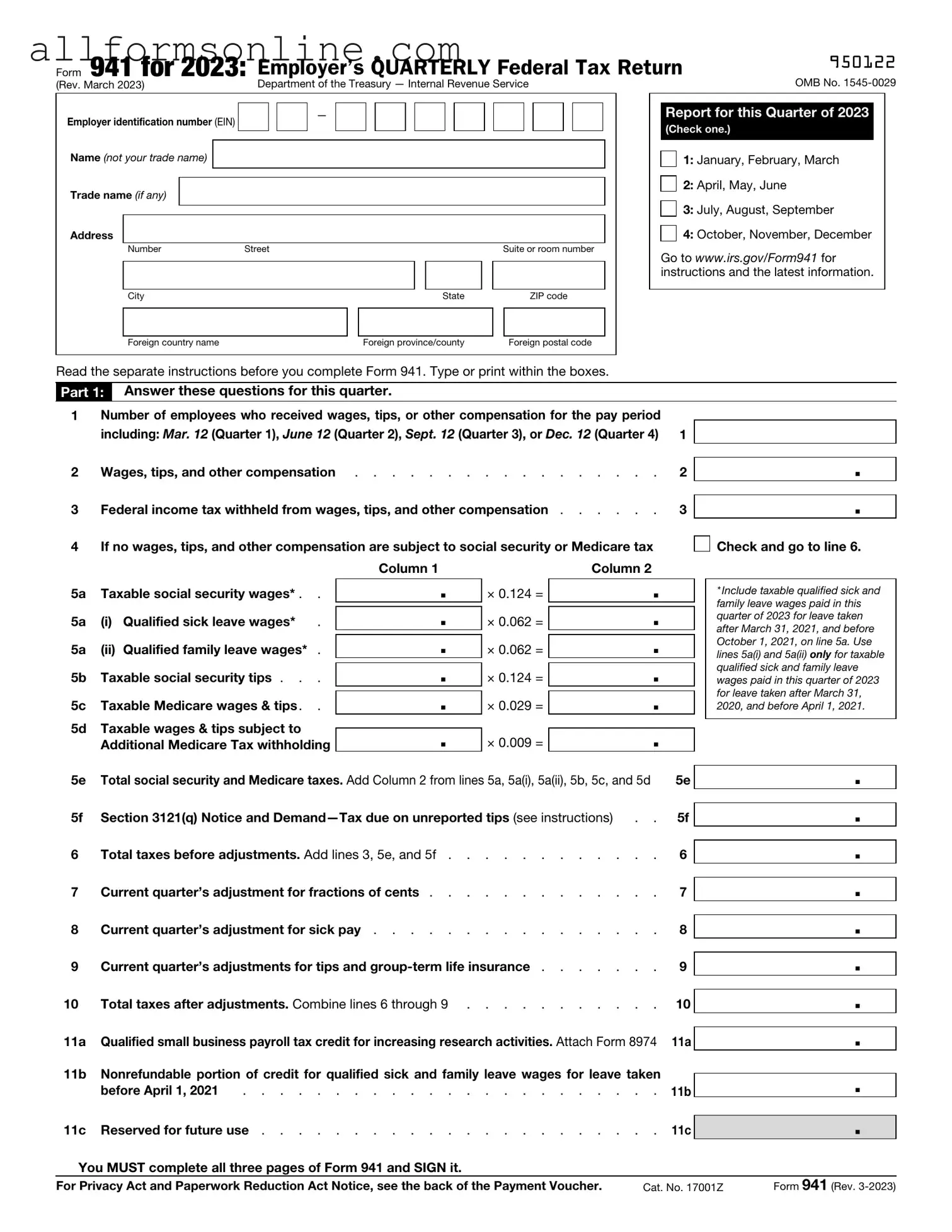What is the IRS 941 form?
The IRS 941 form, officially known as the Employer's Quarterly Federal Tax Return, is a document that employers in the United States must file quarterly. This form reports the amount of federal income tax, Social Security tax, and Medicare tax withheld from employees' paychecks. Additionally, it accounts for the employer's portion of Social Security and Medicare taxes. Filing this form is essential for compliance with federal tax obligations and helps the IRS track payroll tax liabilities.
Who is required to file Form 941?
Any employer who pays wages to employees and is subject to federal payroll taxes must file Form 941. This includes businesses of all sizes, non-profit organizations, and government entities that have employees. If an employer has no wages to report for a quarter, they may still need to file a return indicating that no wages were paid. Special rules apply for seasonal employers or those who have ceased operations, which may affect their filing requirements.
When is the deadline for filing Form 941?
Form 941 is due four times a year, with specific deadlines for each quarter. The due dates are typically the last day of the month following the end of each quarter. For example, the deadlines are April 30 for the first quarter, July 31 for the second quarter, October 31 for the third quarter, and January 31 for the fourth quarter. Employers who fail to file on time may incur penalties and interest on any unpaid taxes.
What happens if Form 941 is filed incorrectly?
If an employer discovers an error after filing Form 941, they should correct it as soon as possible. This can be done by filing Form 941-X, which is specifically designed for correcting mistakes on previously filed 941 forms. Common errors include miscalculating tax amounts, incorrect employee information, or failing to report all wages. Timely corrections can help avoid penalties and ensure compliance with tax obligations.
